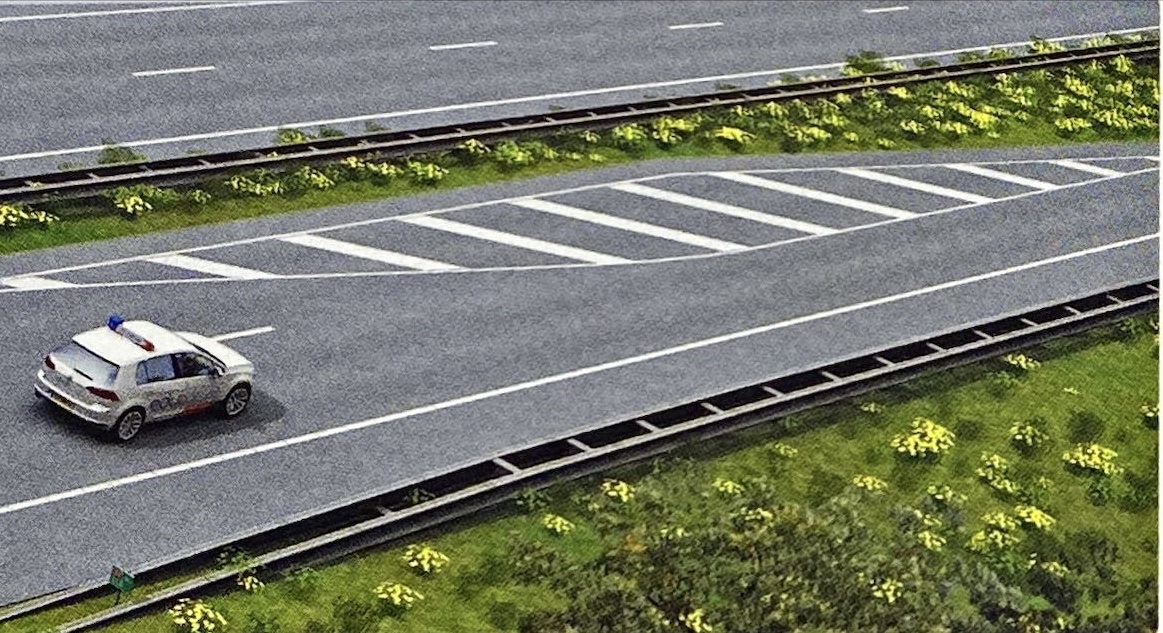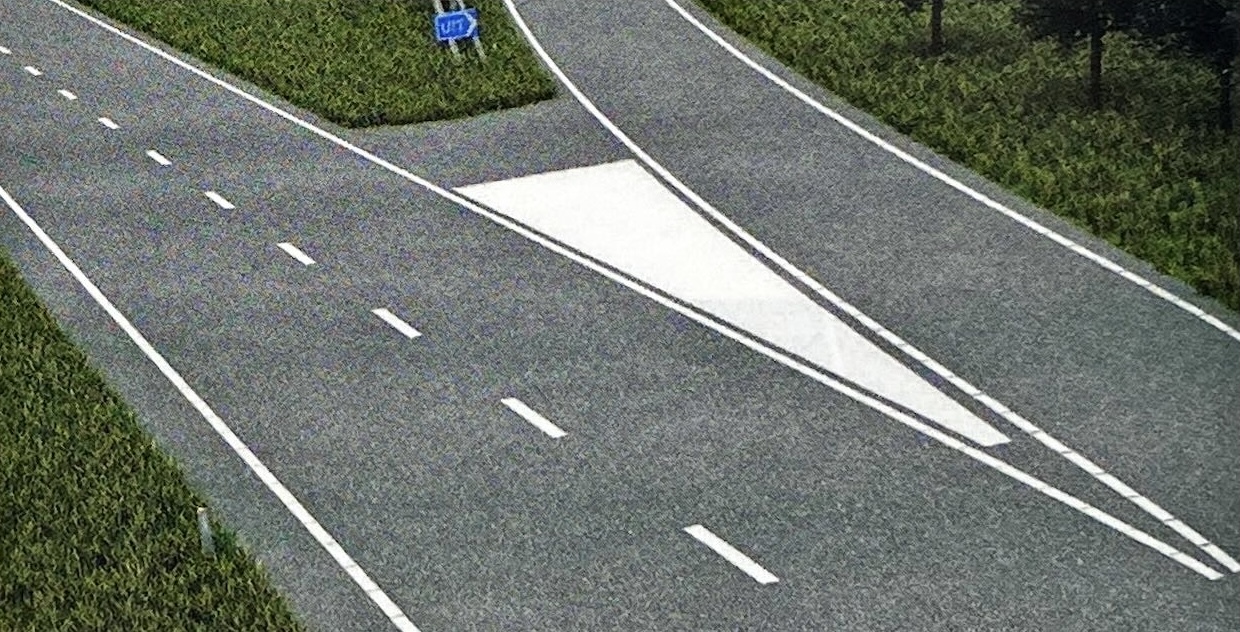On the road surface, you will encounter various types of markings:
- Markings that indicate commands or prohibitions.
- Markings that guide you in staying on the road. - Markings that designate parts of the roadway for specific road users.
- Markings that provide information.
Many roads are equipped with markings such as:
- Center lines.
- Lane lines.
- Edge lines.
Center Line
This line in the middle of the road separates the two directions of travel on a two-way road. A center line can be either broken (dashed) or continuous (solid).
- Solid line: overtaking is not allowed
- Dashed: overtaking is allowed
Lane Line
A lane line divides the roadway into different lanes for traffic moving in the same direction. A lane line can be either broken or solid. Similarly, you are not allowed to cross a solid lane line.
Edge Line
An edge line is a continuous line along the side of the roadway. It delineates the boundary of the road. This road marking is designed to help drivers stay on the road. You are allowed to cross an edge line in certain situations, such as:
- To enter or exit a driveway.
- To park in a parking lane along the side of the road.
- In emergencies, to use the shoulder, an emergency refuge, or hard shoulder.
Rush Hour Lane
You may also cross the continuous line separating a regular lane on the highway from a rush hour lane, but only when the rush hour lane is open.
Combination Stripe
Sometimes, a continuous and a broken line run alongside each other. This is known as a combination stripe.
The side with the dashed line can cross to the other side, but not the other way around.
Warning Line
A particular type of broken line is the warning line. It consists of long dashes with short gaps. The warning line, as the name suggests, alerts you to potential hazards ahead, such as a dangerous curve or a situation with limited visibility. Typically, a continuous line follows this warning line.
Block Marking
Block marking consists of a broken line that can be crossed. It is used to indicate merging lanes, exit lanes, and road splits.
Additionally, lanes designated for specific turning movements, such as pre-sorting lanes, are sometimes marked with block markings.
Arrows on the road
Arrows on the road lead you in the right direction. If you see an arrow in your lane, you must follow the direction of the arrow. You will encounter arrow markings on pre-sorting, merging and exit lanes, or at roundabouts.
Hatched Area and Chevron
Marked areas that prohibit the use of certain parts of the road are known as hatched areas and chevrons.
- You are not allowed to drive on the hatched area. The stripes indicate the side of the lane you should be driving on.
- You are also not allowed to drive on the chevron. The chevron guides traffic to the left and right.
Temporary marker
During roadworks, a lane may temporarily change. In that case, the temporary yellow stripes take precedence over the normal white stripes.
Yellow signs are also used to denote temporary diversions.
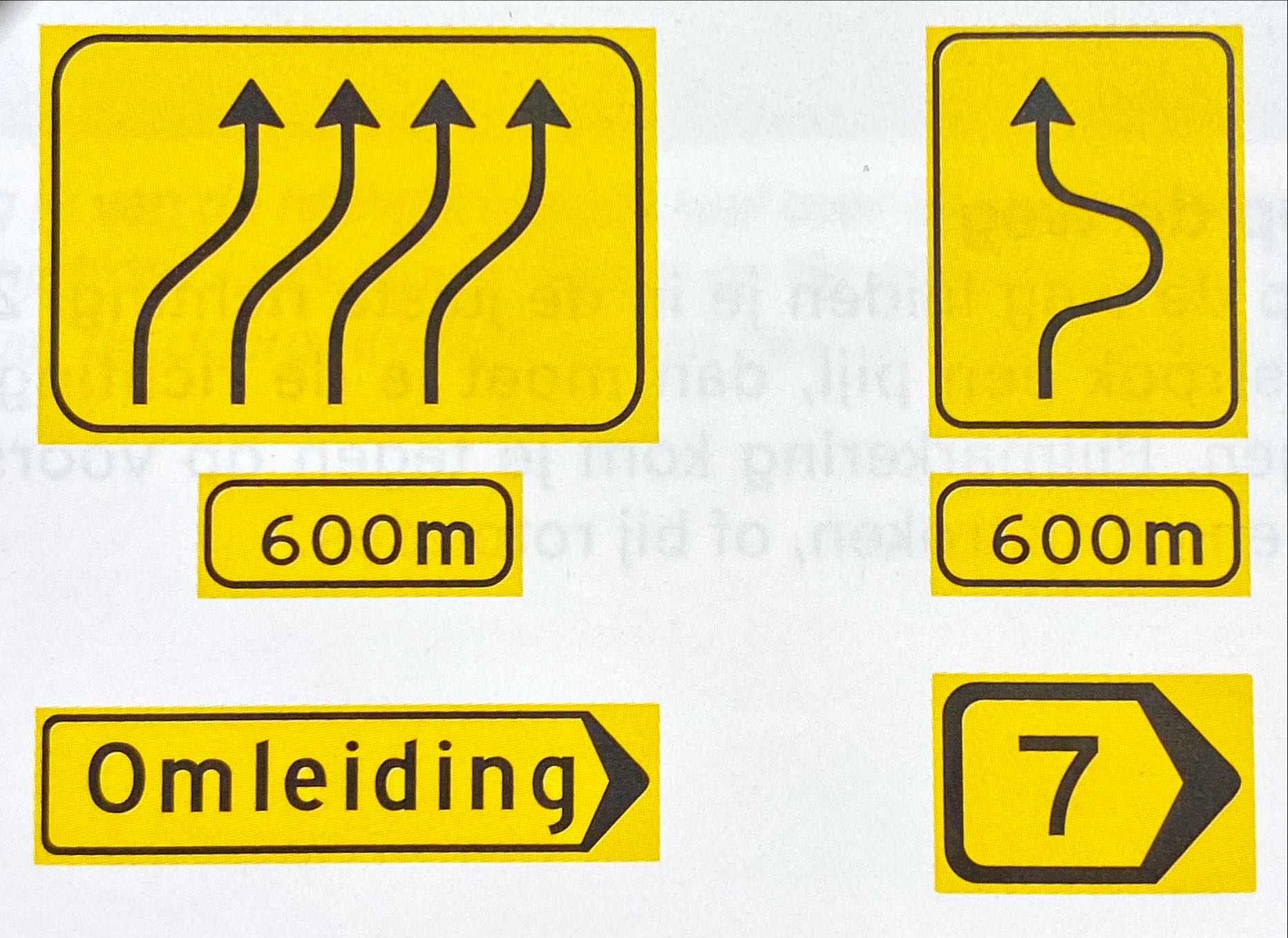
Yellow line on the curb
A curb may have a yellow solid or interrupted line.
- Solid: not allowed to stand still.
- Dashed (interrupted): not allowed to park.
#todo double check this 👆
Blue line
With a blue solid line you are only allowed to park with a parking disc.
A parking disc, often used in various European countries, is a device that allows drivers to indicate the time they parked their vehicle in a designated parking zone. When parking in such an area, you set the disc to show your arrival time, usually displayed in the vehicle’s windshield. This system usually allows free but time-limited parking.
Stop line
A stop line is a wide line across the road. It means that you must stop before the intersection and give priority to drivers on the intersecting road.
Usually seen together with the STOP sign.
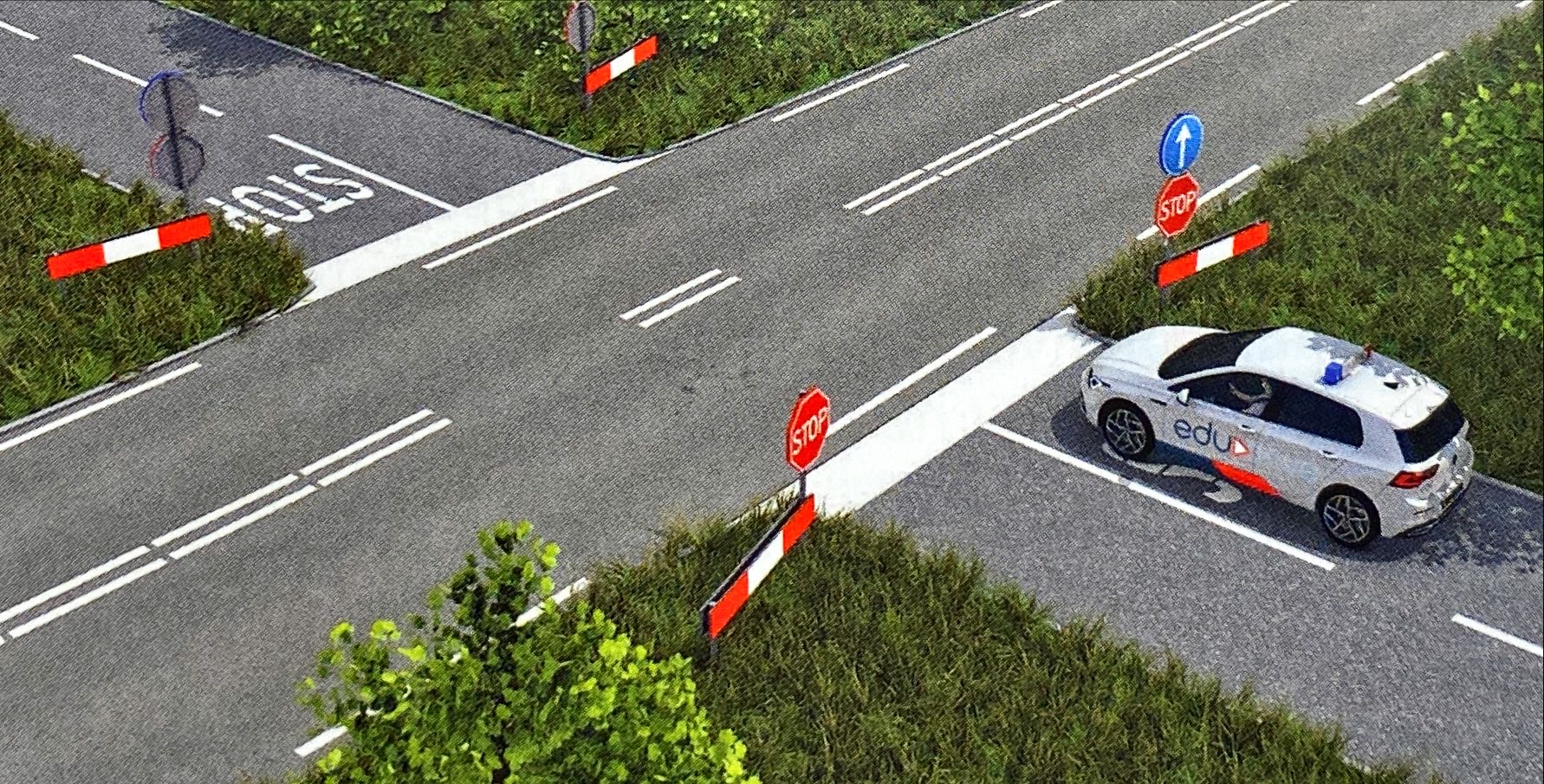
Shark Teeth
You often encounter these priority triangles on the road surface.
If you approach an intersection with shark teeth, you give priority to drivers on the intersecting road.
The triangles point in the direction of who should give priority.
Traffic Signs that Reserve Part of the Lane for Specific Road Users
Bus-Only Lane (busbaan) or Bus Lane (busstrook)
A busbaan is a separate lane only for buses. While a busstrook is a designated part of the regular roadway, marked by either broken or solid lines.
Both are identified by the white letters spelling out ‘BUS’ or ‘LIJNBUS’ on the road.
- A bus lane (either busbaan or busstrook) marked with ‘BUS’ is designated for scheduled buses, other buses (such as coaches), and trams.
- A bus lane (either busbaan or busstrook) marked with ‘LIJNBUS’ is exclusively for scheduled buses and trams.
Bicycle lane
A solid or broken line and the image of a bicycle indicate that this part of the road is reserved for (moped) cyclists and drivers of a disabled vehicle.
The asphalt of the bicycle lane is often red.
- Solid line: Only (moped) cyclists and drivers of a disabled vehicle are allowed to ride in this bicycle lane.
- Dashed line: You can also drive your car on this lane without hindering others.
Informative Road Markings
Zigzag Line
Indicates that you need to slow down because you are approaching a hazardous point.
Road Signage (words?)
Bewagwijzering
Sometimes, road signage provides information about the destination of specific lanes.
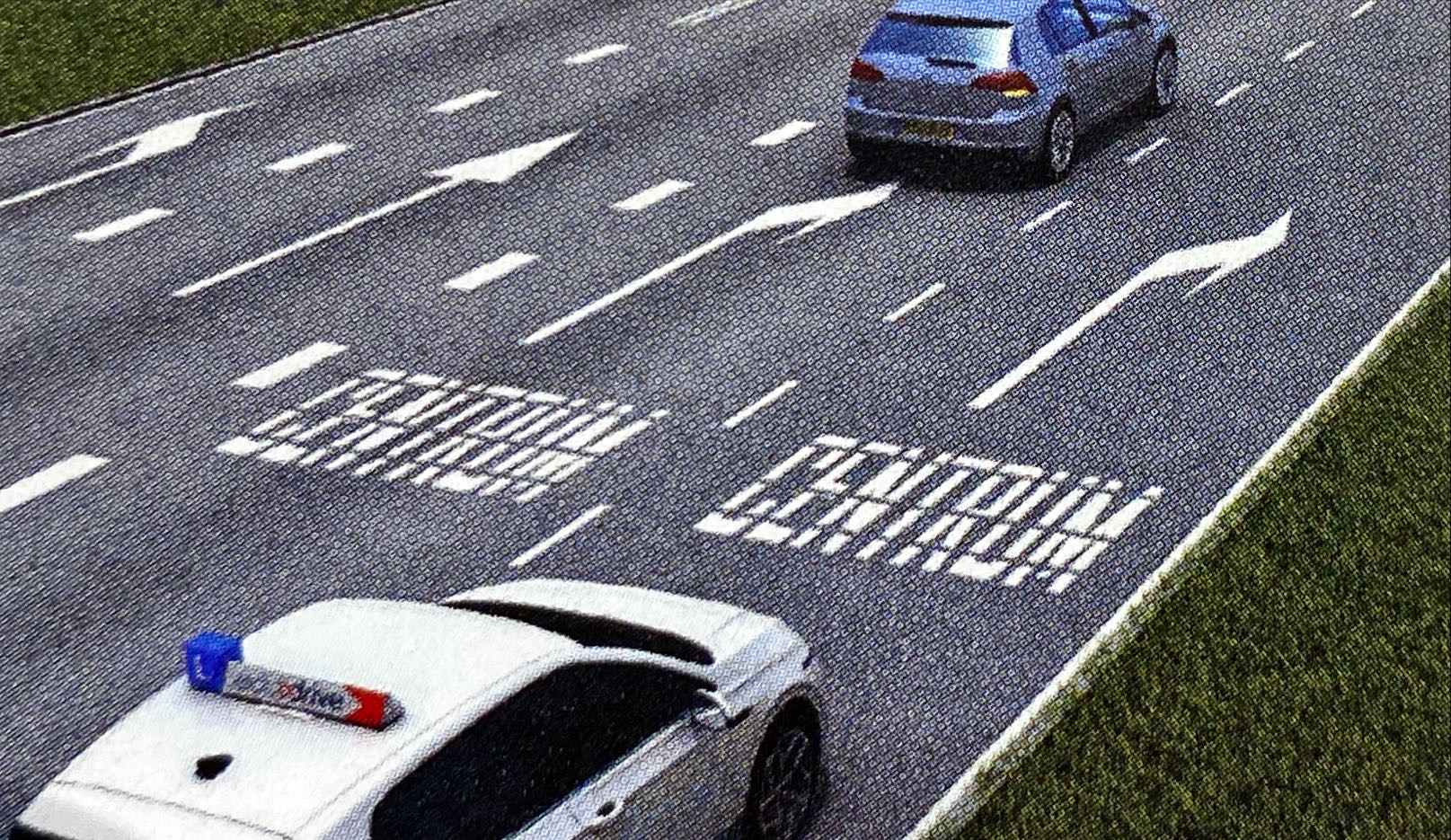
Traffic Drop (Calming Dot?)
Drop: it resembles a tear drop. (verkeersdruppel)
Often found at intersections. This white dot on the road temporarily splits the lane and serves as a simpler alternative to a traffic island.
